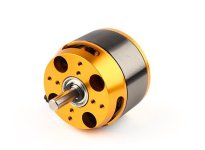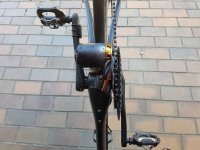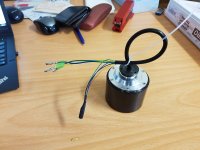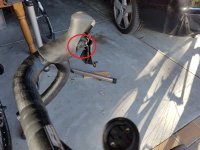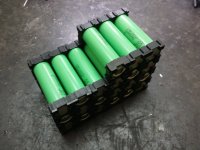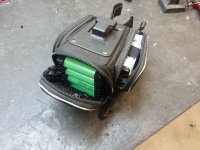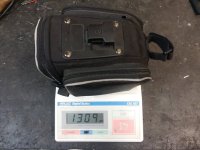For many reasons,
First I do not ride either On / or Off . Also when putting pressure on any item like a spring loaded switch / thumb throttle / twist throttle , that part of the hand
( muscles and tendons ) gets sore and numb .
The more years you have on your body the more you are susceptible to things like Tendinitis, Carpal Tunnel , Sore Muscles, Sore Tendons, having to put constant pressure on a button would produce Tendinitis in a short amount of time.
Add to that
When riding with others ( cyclists that have no e-motor ) they ride try to ride at a constant speed, but sometimes they go a little harder for a little while, then back off to give themself's a bit of a rest while still pedalilng , and the slight difference can often be matched by me shifting a few gears and/or pedaling a little harder or a little less.
so having a switch ( button switch , or toggle switch ) for just On or OFF just would Not Work
Also
I learned many years ago with my first electric scooter, that even a thumb throttle , the way it is designed has a couple of
Flaws, First with a Spring Loaded Thumb Throttle you Thumb gets sore in short order. So you don't ride , or ride just
a little, Also , With a Spring Loaded Thumb Throttle when you hit a bump / go over a pot hole/ go over ruff ground,
your speed speeds up or slows down too suddenly. Not good when riding with others you will either ride right into them or the ones behind will run into you . not good in either case.
I have ridden bikes for 5 decades, and the best way to ride a electric assist bike , is to have a throttle with cruise control.
What you do is use the throttle to get to the speed you want to maintain, then use the cruise feature, then match your gears front and rear to what your legs and cardiovascular system can handle that day. You also turn off the cruise feature for short periods as well.
The amount of effort I can put into the cranks changes every day.
Add to that that I have arthritis / tendinitis in both knees, one knee chronically with allot of pain every time I ride a bike, and especially when I ride a bike without any assist,
Now you see the need for not only a throttle , a throttle with cruise control.
What I have done with my thumb throttle on the Road Bike since there is no cruise control button like on the infineon controllers.
is that I took out the spring, then put in some white athletic tape on the inside to cause just a small amount of stiction.
That way when I get to the speed I want , or need to be at , I leave the position there, and again I adjust the gears for how much assist I will be giving the motor, that way I can speed up a little by pedaling harder, or lighter to slow down a little.
So Electric Assist, just in Reverse order , Which by the way Works Much Much Better.
Kepler said:
Why don't you just use a button on / off throttle. That's all you need for a low level assist.


